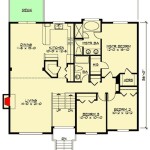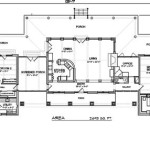Floor Plan for My House
Designing the floor plan for your house is a crucial step that sets the foundation for the functionality, comfort, and aesthetic appeal of your living space. Here's an informative guide to help you navigate the process and create a floor plan that meets your needs and aspirations.
Understanding Your Requirements
Before embarking on the design process, it's essential to define your specific requirements. Consider the number of bedrooms, bathrooms, and other functional areas you need. Determine the desired flow between spaces and identify any special features or amenities you wish to incorporate.
Space Allocation and Room Placement
Efficient space allocation is key to creating a well-organized and livable floor plan. Determine the square footage needed for each room and consider the optimal placement of windows, doors, and other structural elements. Plan for logical adjacencies, such as placing the kitchen adjacent to the dining room and the master bedroom close to the laundry room.
Circulation and Flow
The floor plan should facilitate effortless movement throughout the house. Design hallways that are wide enough for comfortable passage and avoid creating narrow or congested areas. Pay attention to the flow of traffic, ensuring smooth transitions between rooms and minimizing unnecessary detours.
Lighting and Ventilation
Natural light plays a vital role in creating a healthy and inviting atmosphere. Incorporate ample windows and consider skylights to maximize daylighting. Ensure proper ventilation by providing cross-ventilation or installing mechanical ventilation systems to maintain air quality and prevent moisture buildup.
Privacy and Personal Spaces
Consider the privacy needs of different occupants when designing the floor plan. Designate quiet areas for study or relaxation and provide separate spaces for bedrooms and bathrooms to ensure privacy. Create private outdoor spaces, such as balconies or patios, to extend living areas and offer respite from the hustle and bustle of daily life.
Visual Appeal and Aesthetics
While functionality is paramount, don't neglect the aesthetic appeal of your floor plan. Consider the visual flow of spaces and strive for a harmonious and aesthetically pleasing arrangement. Incorporate architectural elements such as archways, vaulted ceilings, or bay windows to add interest and create a sense of spaciousness.
Flexibility and Adaptability
Life circumstances can change, so it's wise to design a floor plan that offers flexibility and adaptability. Include convertible spaces that can serve multiple purposes, such as a guest room that can be converted into a home office. Incorporate structural elements that allow for future expansion or modifications, ensuring that your house evolves with your changing needs.
Professional Assistance and Reference Materials
Consider consulting with an architect or interior designer for professional guidance and expertise. They can help you create a floor plan that optimizes space, meets your functional requirements, and aligns with your aesthetic vision. Utilize reference materials such as online floor plan templates, design magazines, and books to gather inspiration and ideas.

House Plans How To Design Your Home Plan

Pin On House Layout

House Plans How To Design Your Home Plan

Drawing Up Floor Plans Dreaming About Changes Young House Love

Floor Plans Learn How To Design And Plan

Floor Plans Types Symbols Examples

How To Read A Floor Plan With Dimensions Houseplans Blog Com

3 Bedroom House Plans Bla 021 7s My Building Free For Bungalow Floor

My Home Free Design 3d House Floor Plans By Planner 5d
51.jpeg?strip=all)
My House Design Home








